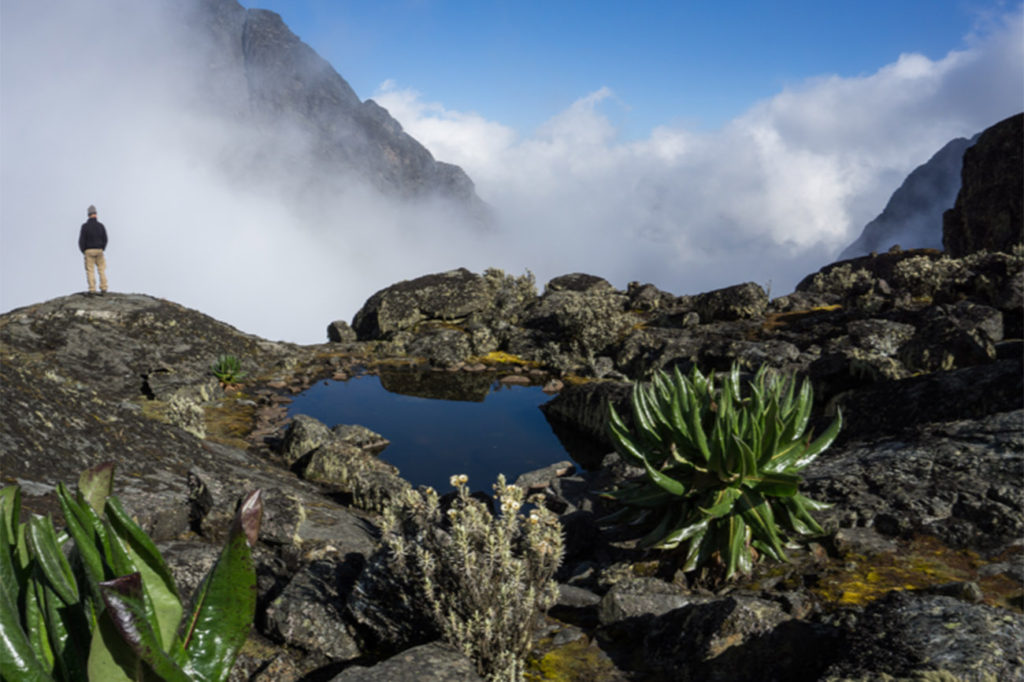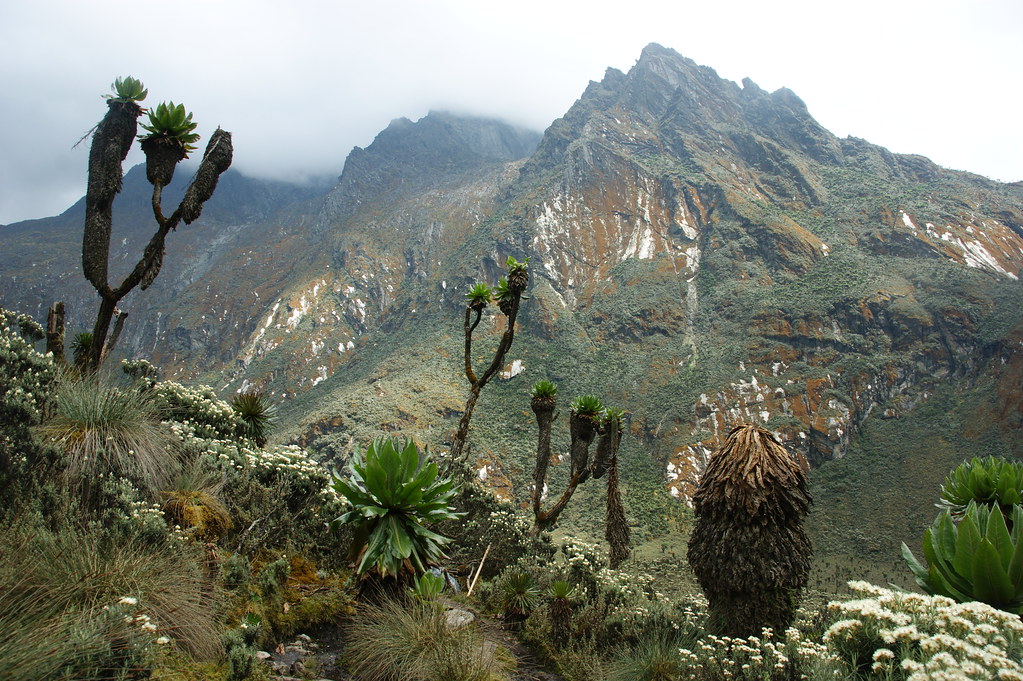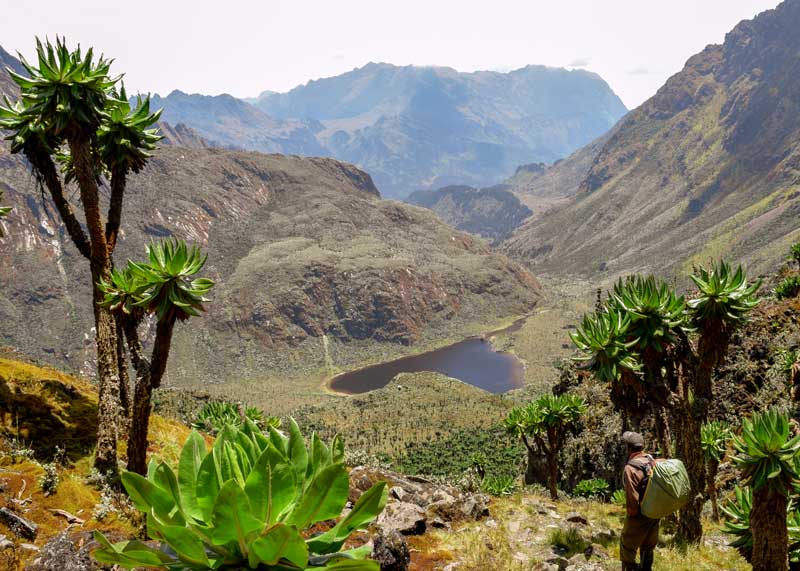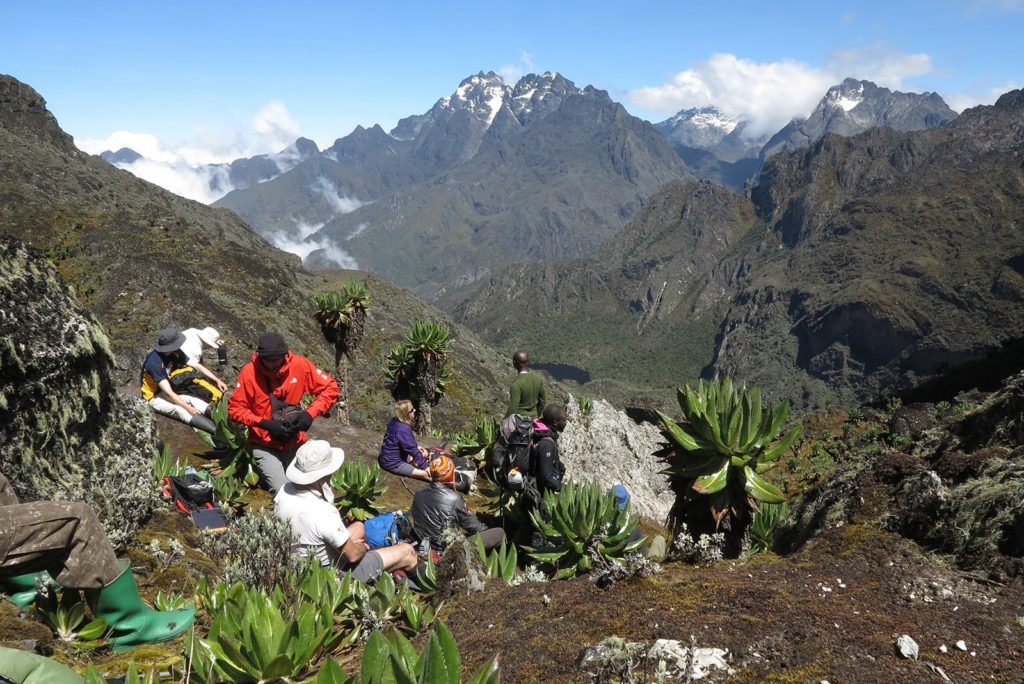Mount Stanley: Mount Rwenzori National Park
Mount Stanley, the highest massif in the Rwenzori Mountains, was given the name in honor of the European scientist Sir Henry Murton Stanley. He was the very first European to arrive at this specific location throughout his research trip in Uganda. The Rwenzori mountains are an element of the Mount Rwenzori national park and have been designated as a UNESCO World Heritage site. Mount Rwenzori is situated in the western region of Uganda, in very close proximity to the border shared by Uganda and the Democratic Republic of Congo. With an elevation of 5109 meters, this massif is the third highest peak in Africa, ranking below only Kilimanjaro in Tanzania and Kenya.
Mount Stanley has a beautiful natural formation that emerges from dense vegetation and surreal marshlands, reaching its highest point with several distinct summits, all encompassed by one of the greatest collections of glaciers in Africa.
The following summits include: The elevation of Margherita Peak is 5109 meters. Alexandra promptly departed from the summit located on the far right.
Alexandra Peak is located 5091 meters away from Margherita Summit.
Albert Park has an elevation of 5087 meters.
The elevation of Savoia Peak is 4977 meters. The summit with the greatest elevation on the left side.
Elena’s elevation is 4,970 meters.
Elizabeth Peak has an elevation of 4928 meters.
Philip’s elevation is 4919 meters.
The measurement is 4918 meters.
The height of Kitasamba is 4860 meters.
The distance is 4860 meters.
Reserve your 13-day Rwenzori Trekking tour with mount Rwenzori national park and Travel to embark on this challenging journey to the summit.

History of mount Rwenzori (mount stanely)

Over a span of several years, adventurers made numerous attempts to reach the mountain peaks, only to be consistently hindered by dense vegetation, adverse weather conditions, diseases, or time constraints. Nevertheless, in 1906, the Duke of Abruzzi spearheaded an expedition comprising of six researchers, four alpine guides, and the exceptional photographer Vittorio Sella. Assisted by a team of more than 300 porters, they successfully ascended to the summits of all six massifs in the range, which were then home to glaciers. This included reaching the highest peaks of Mt. Stanley. The Duke, J. Petigax, C. Ollier, and J. Brocherel successfully climbed Margherita Peak by traversing from the summit of Alexandra Peak.
Regrettably, during the following years, the region has been afflicted by political instability, armed conflicts, authoritarian rulers, and malaria. In 2003, there were tales of cannibals armed with AK-47 rifles wandering through the town of Bunia, located across the rift valley from the mountain range in the Democratic Republic of the Congo. Furthermore, the formerly splendid glaciers have significantly receded. Three mountain ranges have completely lost their ice. Mt. Baker possesses only a small number of insignificant residual glaciers, while Mt. Speke boasts a solitary glacier that holds some significance. Currently, Mt. Stanley is the sole peak in the range that retains a significant amount of glacier.
Mount stanley climate
Climate Mt. Stanley is a fractured slab mountain that elevates itself among two rifts in the African Rift System. The mountains are enveloped in dense mists, experiencing frequent rainfall accompanied by thunder and lightning. Nowhere else on Earth can one find such a remarkable assemblage of fog, moss, and forests.
Mount Rwenzori ranges has considerable rainfall in the form of rain, sleet, and snow throughout the majority of the year. However, there are two more drier periods: January/February and mid June through mid August. Although there may be prolonged bouts of fog and showers, we strongly advise you to schedule your trip during one of these time periods. Nevertheless.
Mount Rwenzori national park harbor several unique species of wildlife, including the renowned three-horned chameleon, also known as “Johnston’s Chameleon.” The scientific name Trioceros jacksonii is derived from the Chamaeleonidae family, which is found in the East African region, including Uganda. The term “Trioceros” signifies the presence of three horns on the skulls of fully-grown chameleons, while “Jacksonii” is taken from Fredrick John Jackson, the inaugural Governor of Kenya, who was renowned for his explorations and expertise in ornithology.


This species is unique to East Africa and is found in places with altitudes of at least 3000 meters above sea level. The three-horned chameleons inhabit the higher slopes of the Rwenzori Mountains due to this particular cause, among other locations. Similar to other Chameleons, they also alter their coloration for the purpose of protection or to facilitate the capture of their prey, which primarily consists of small insects. Color change serves as a form of communication, allowing chameleons to convey their mood to other chameleons and indicate their intentions, such as courting females or engaging in combat with male counterparts.
A unique and distinctive distinction between male three-horned chameleons and other species is in the presence of three prominent horns on their foreheads. Similar to other species, these chameleons employ their exceptional abilities to change color in order to integrate seamlessly with their surroundings. The majority of chameleons utilize their remarkable ability to change colors as a means of concealing themselves from potential threats, particularly predators such as snakes and birds. The lifespan of these chameleons with three horns is approximately 10 years when kept in captivity. At approximately 6 to 12 months of maturity, a typical fully grown Johnston’s chameleon has a length of 30 centimeters. A fully developed male has a length of up to 38 centimeters, while females have a length of up to 25 centimeters.
